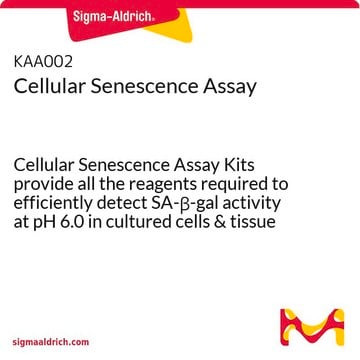580555
Paclitaxel
from Taxus sp., ≥97% (HPLC), solid, antitumor agent, Calbiochem®
Synonym(s):
Paclitaxel, Taxus sp., Baccatin III N-benzyl-β-phenylisoserine Ester, TAXOL®
About This Item
Recommended Products
product name
Paclitaxel, Taxus sp., Antitumor and antileukemic agent isolated from the bark of the yew tree.
Quality Level
Assay
≥95% (NMR)
form
solid
manufacturer/tradename
Calbiochem®
storage condition
OK to freeze
desiccated
protect from light
color
white
solubility
methanol: 1 mg/mL
DMSO: 10 mg/mL
shipped in
ambient
storage temp.
−20°C
InChI
1S/C47H51NO14/c1-25-31(60-43(56)36(52)35(28-16-10-7-11-17-28)48-41(54)29-18-12-8-13-19-29)23-47(57)40(61-42(55)30-20-14-9-15-21-30)38-45(6,32(51)22-33-46(38,24-58-33)62-27(3)50)39(53)37(59-26(2)49)34(25)44(47,4)5/h7-21,31-33,35-38,40,51-52,57H,22-24H2,1-6H3,(H,48,54)/t31-,32-,33+,35-,36+,37+,38?,40-,45+,46-,47+/m0/s1
InChI key
RCINICONZNJXQF-VAZQATRQSA-N
General description
Biochem/physiol Actions
Promotes assembly of microtubules and inhibits tubulins disassembly
Warning
Reconstitution
Other Notes
Milas, L., et al. 1995. Cancer Chemother. Pharmacol.35, 297.
Donaldson, K.L., et al. 1994. Int. J. Cancer 57, 847.
Hornback, N.B., et al. 1994. In Vivo8, 819.
Manthey, C.L., et al. 1992. J. Immunol. 149, 2459.
Rowinsky, E.K., et al. 1992. Semin. Oncol.19, 646.
Ding, A.H., et al. 1990. Science248, 370.
Mogensen, M.M. and Tucker, J.B. 1990. J. Cell Sci.97, 101.
Slichenmeyer, W.J. and Von Hoff, D.D. 1990. J. Clin. Pharmacol. 30, 770.
Legal Information
Signal Word
Danger
Hazard Statements
Precautionary Statements
Hazard Classifications
Muta. 2 - Repr. 1B - STOT RE 1
Target Organs
Central nervous system,Bone marrow,Cardio-vascular system
Storage Class Code
6.1C - Combustible acute toxic Cat.3 / toxic compounds or compounds which causing chronic effects
WGK
WGK 3
Flash Point(F)
Not applicable
Flash Point(C)
Not applicable
Certificates of Analysis (COA)
Search for Certificates of Analysis (COA) by entering the products Lot/Batch Number. Lot and Batch Numbers can be found on a product’s label following the words ‘Lot’ or ‘Batch’.
Already Own This Product?
Find documentation for the products that you have recently purchased in the Document Library.
Customers Also Viewed
Related Content
MILLIPLEX® genotoxicity assays enable high-throughput measurement of DNA damage, reducing time and cost.
MILLIPLEX® genotoxicity assays enable high-throughput measurement of DNA damage, reducing time and cost.
MILLIPLEX® genotoxicity assays enable high-throughput measurement of DNA damage, reducing time and cost.
MILLIPLEX® genotoxicity assays enable high-throughput measurement of DNA damage, reducing time and cost.
Our team of scientists has experience in all areas of research including Life Science, Material Science, Chemical Synthesis, Chromatography, Analytical and many others.
Contact Technical Service











